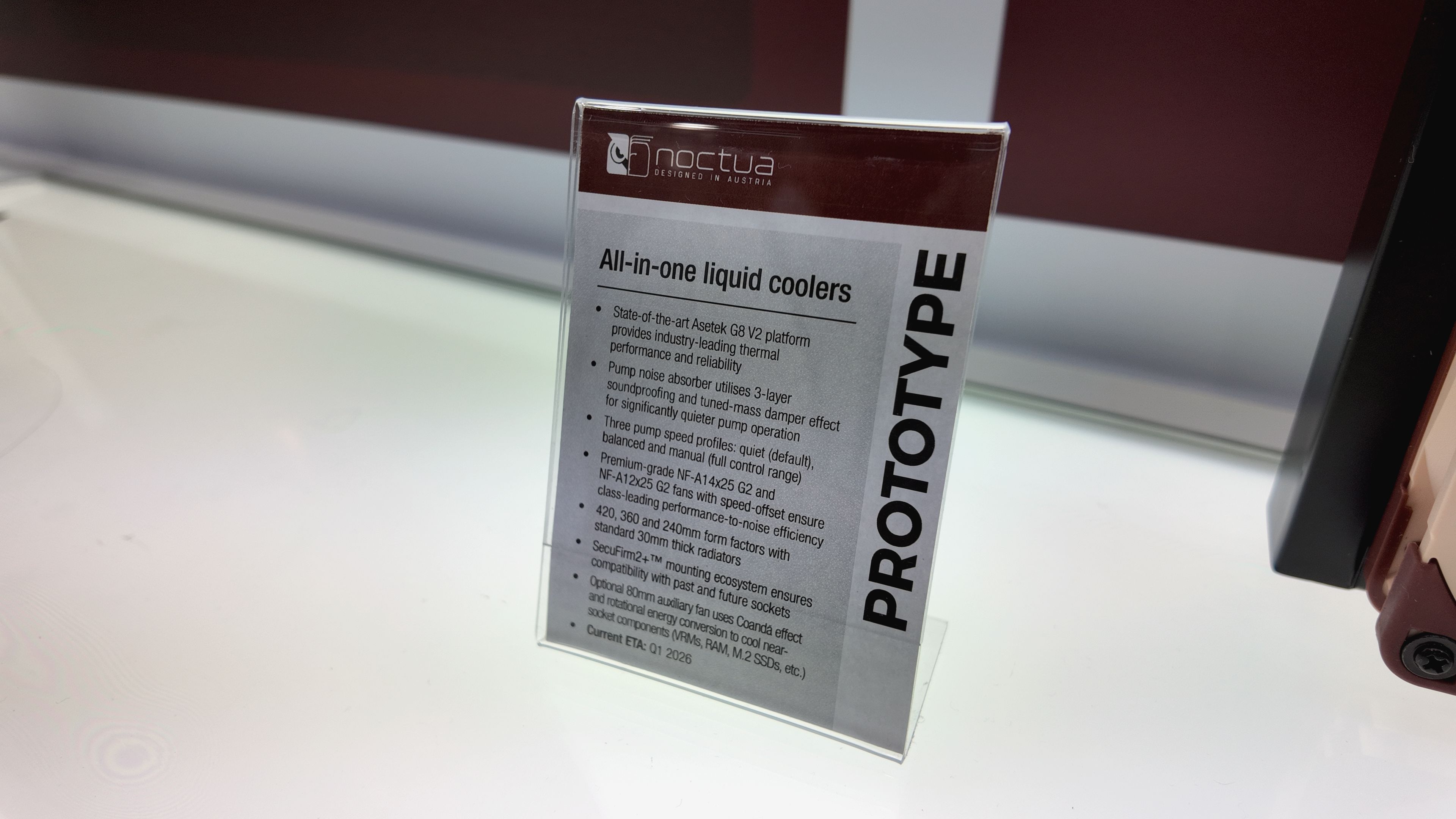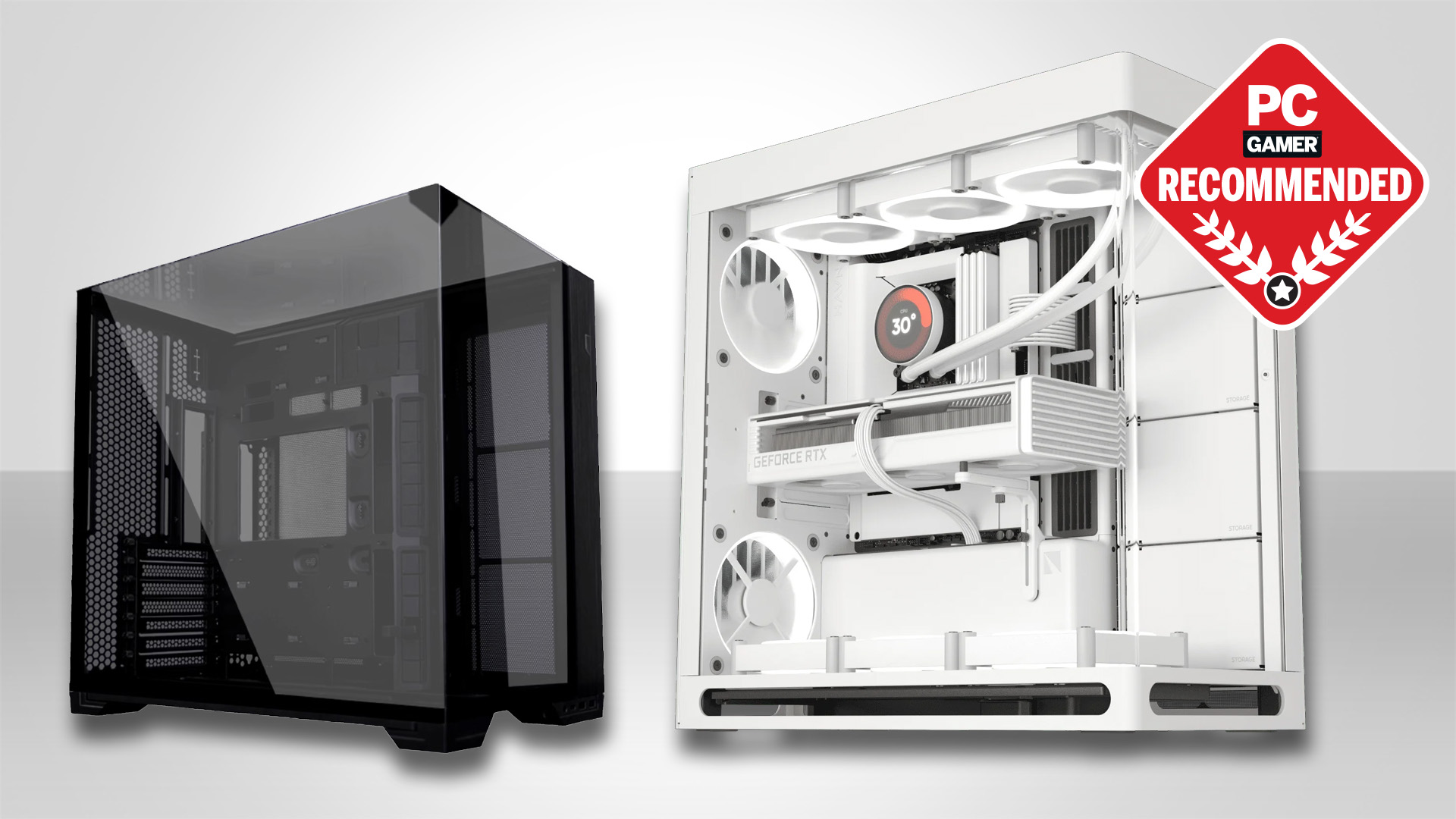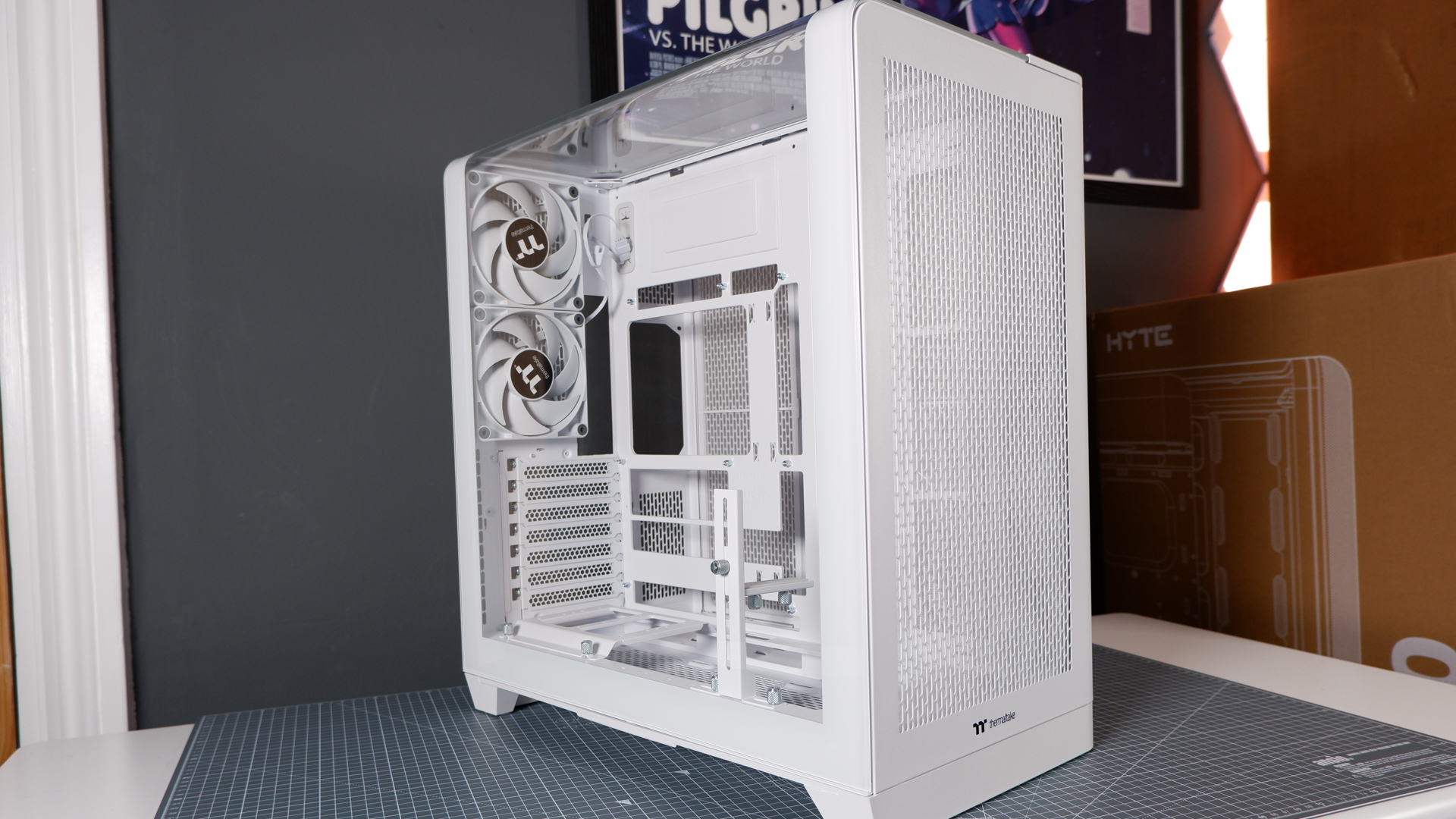Noctua aims to release its first liquid CPU cooler in 2026, working with Asetek to make the quietest water pump around, though it's not the thermosiphon project
But as with all of Noctua's projects, it won't really be released until it's perfect.
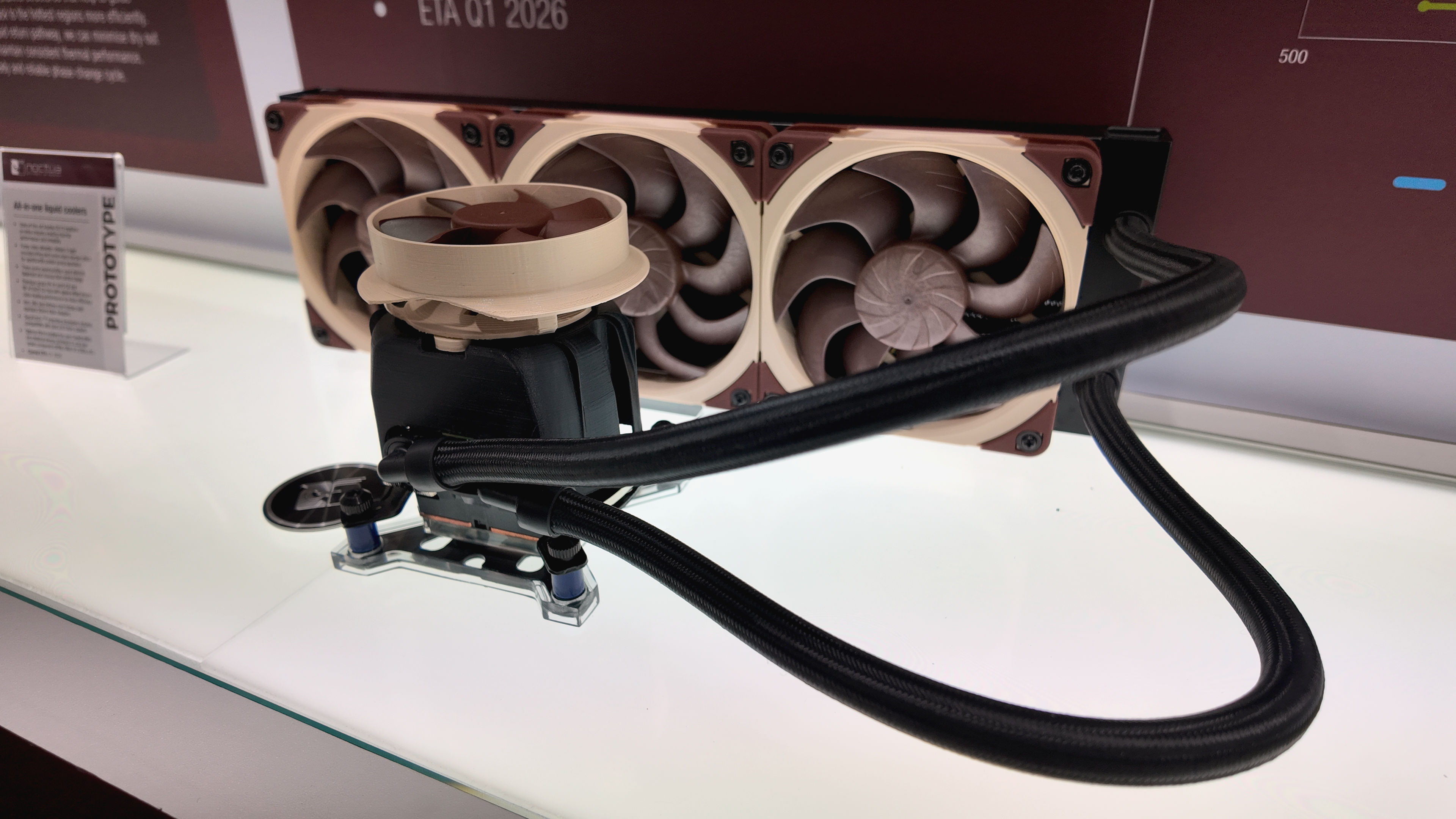
Noctua, purveyor of ultra-quiet brown/beige fans and massive CPU coolers for twenty long years, has resolutely stayed away from one specific medium, when it comes to keeping chips cool: water. However, at this year's Computex 2025, Noctua showed the progress it's making with its liquid thermosiphon system, but that won't be the first to market: instead, it's going to be a collaboration with Asetek, and possibly be the quietest AIO liquid cooler you can buy.
The nameless-so-far product will be based around Asetek's best liquid cooler platform, the G8 V2, so it will be offered in 420, 360, and 240 mm radiator formats, all using the industry-standard 30 mm thickness.
Naturally, the flow of air through said radiators will be handled by Noctua, with NF-A14x25 G2 140 mm or NF-A12x25 G2 120 mm fans being the specific models chosen for the cooling duties. While these aren't even remotely cheap ($45 for the 140 mm version), they are exceptionally good, arguably more than their predecessors, the AF-A12/A14x25, shifting plenty of air, all while creating very little noise.
Things really get interesting at the other end of the cooling loop: the pump head. While that's still an Asetek design, Noctua has applied its engineering skills to tackle the amount of noise the unit creates, and it's done this by designing a shroud for the pump that houses a wedge of noise-absorbing material.
The absorber you can see in the pictures is just a dummy, though, as Noctua didn't want anyone's prying eyes getting the jump on its work before the product hits the shelves. It reckons its design is almost 6 decibels quieter than a standard arrangement, and considerably more than anything sporting an LCD display (of which we saw lots of at Computex).
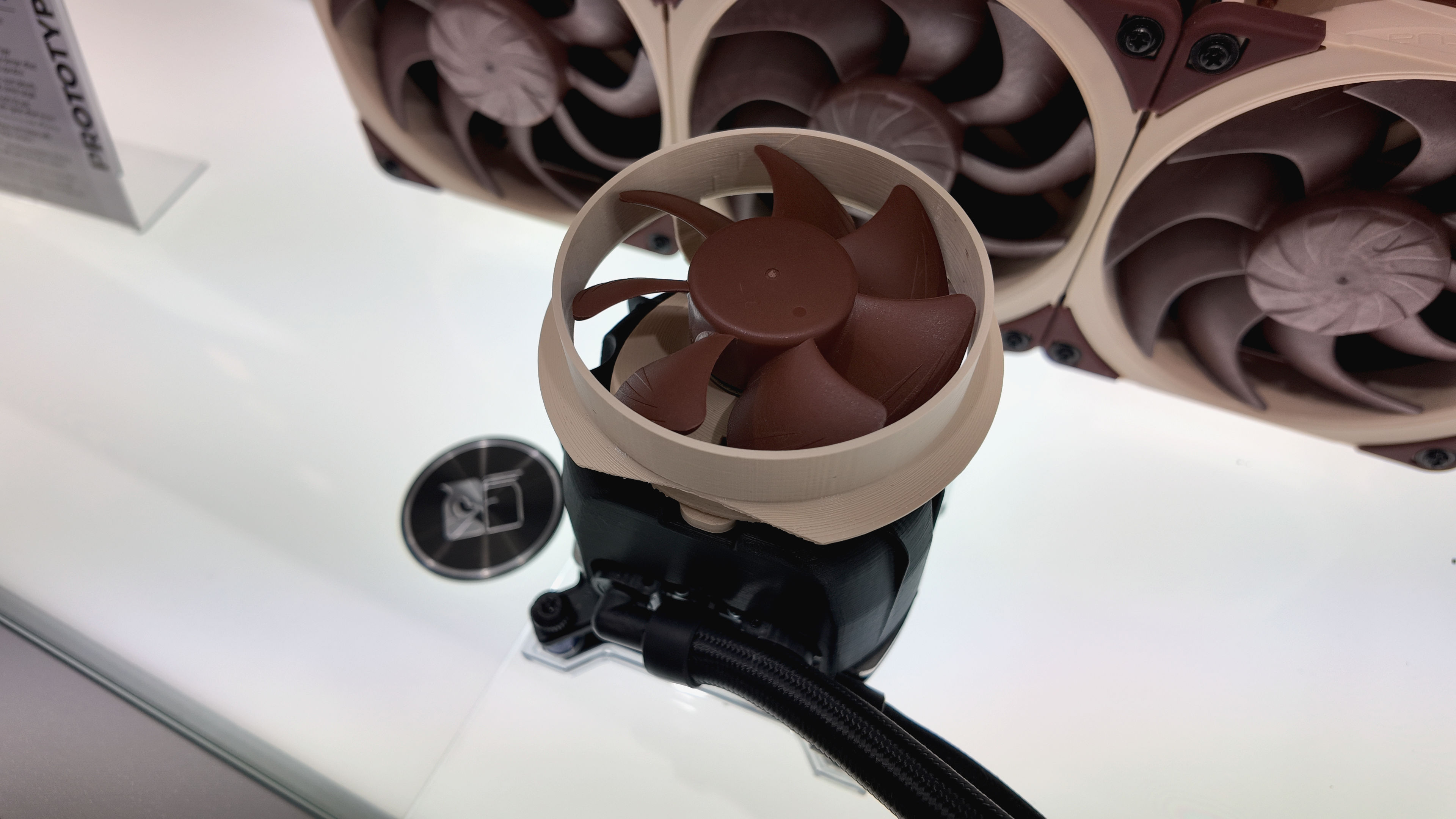
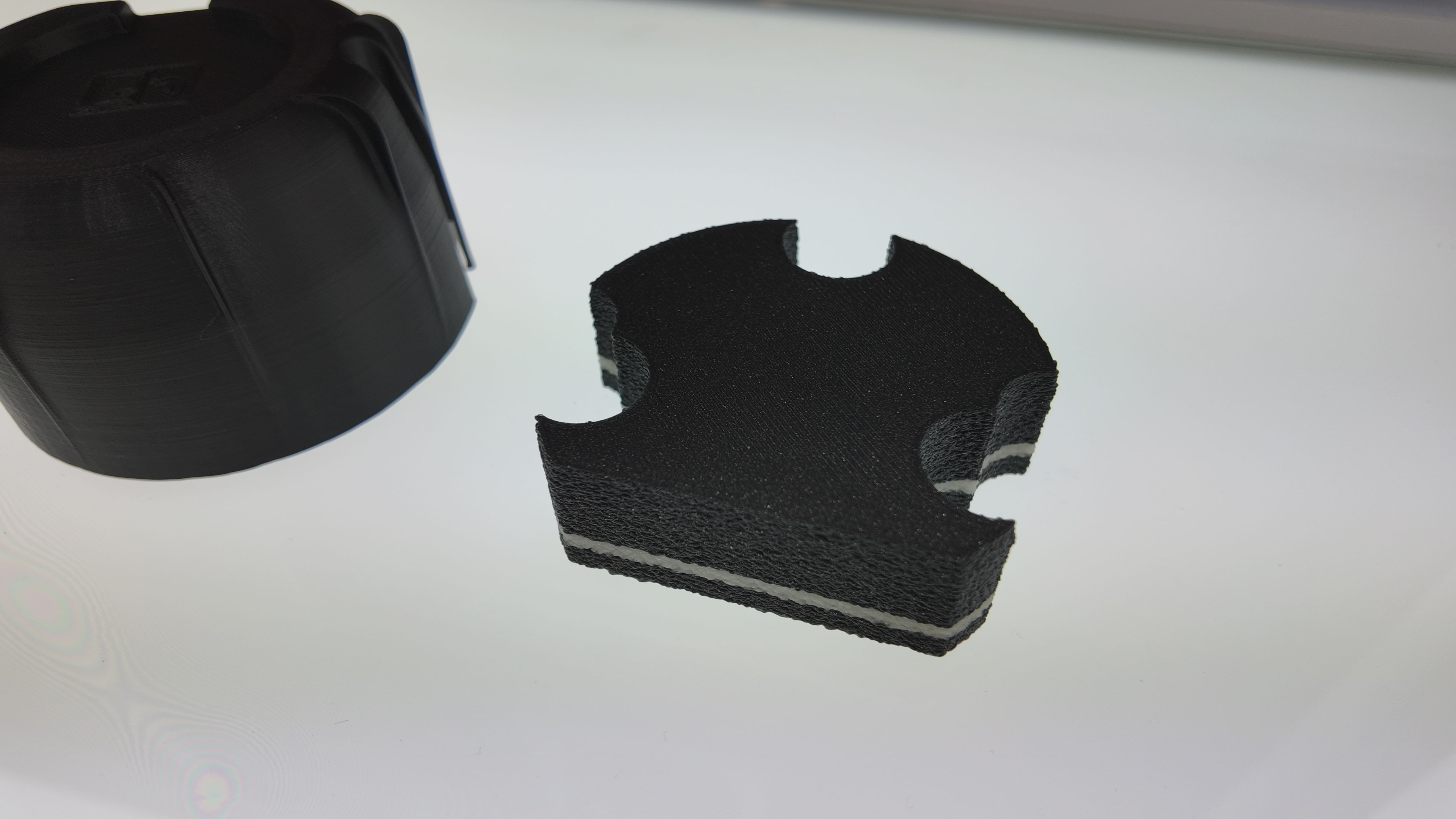
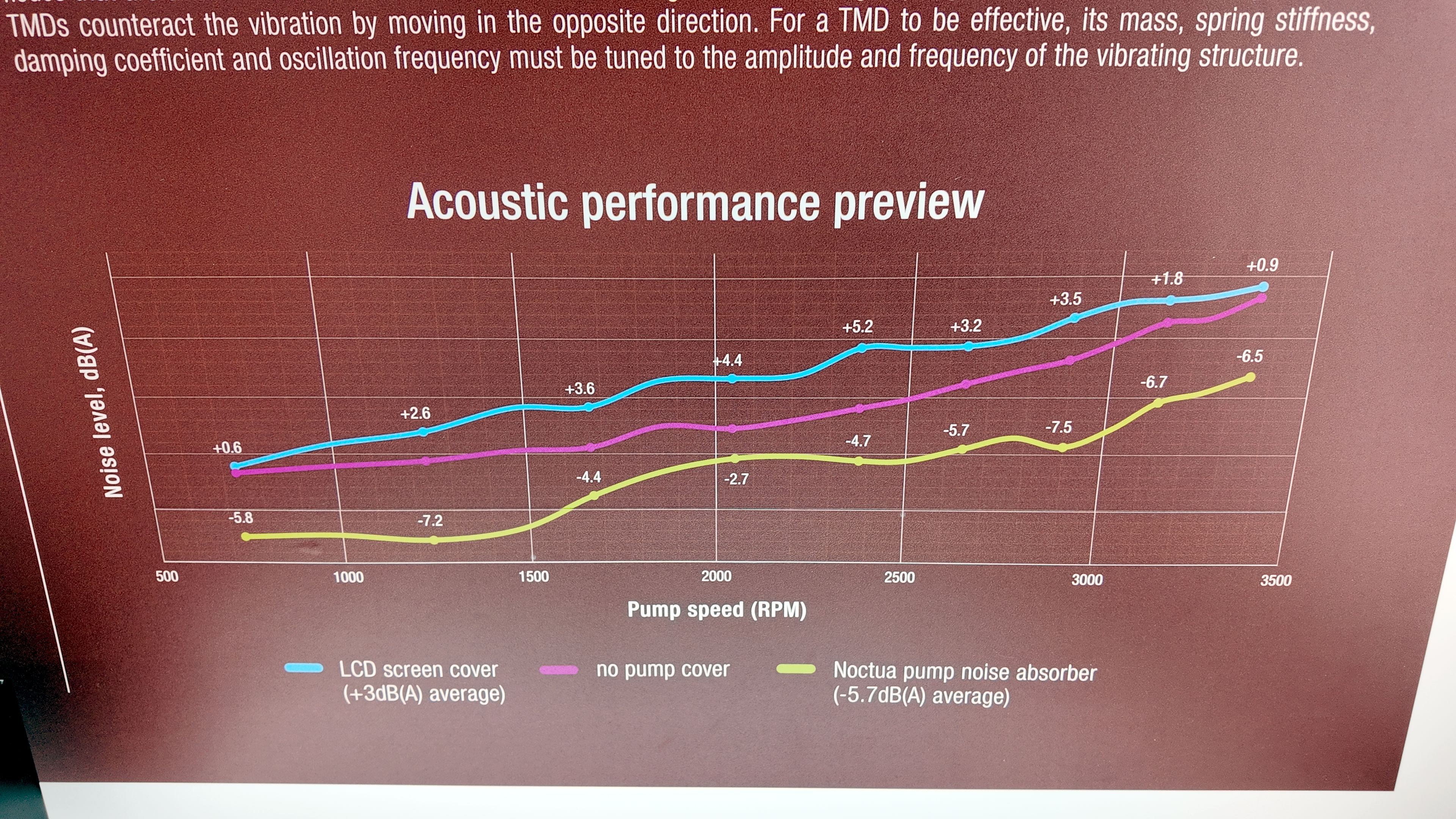
Another recent trend in AIO liquid cooler designs is adding an additional fan at the pump head to drive air across the nearby power delivery components for the CPU and RAM, as well as helping out the primary SSD (which always gets pretty toasty due to being stuffed next to a graphics card).
Noctua's solution is an optional 80 mm fan, where its position and airflow take advantage of the Coandă effect—this is where an air stream tends to cling to a surface and flow across it, rather than bouncing off in all directions.
Keep up to date with the most important stories and the best deals, as picked by the PC Gamer team.
You might think the fan looks somewhat ridiculous, precariously perched on top of the pump head, but as with everything else, this is a work in progress, and Noctua told us that the final design will involve a snugger fit between the fan and pump shroud. Then again, Noctua's well known for putting performance well ahead of aesthetics, so you never know.
At the moment, Noctua is tentatively targeting a launch date of early 2026, but as with all of its projects, this one won't see the light of day on any retailer's shelves until Noctua is 100% happy with it. But given what we saw at Computex, I'd say there's a very good chance you'll be able to buy one next year.
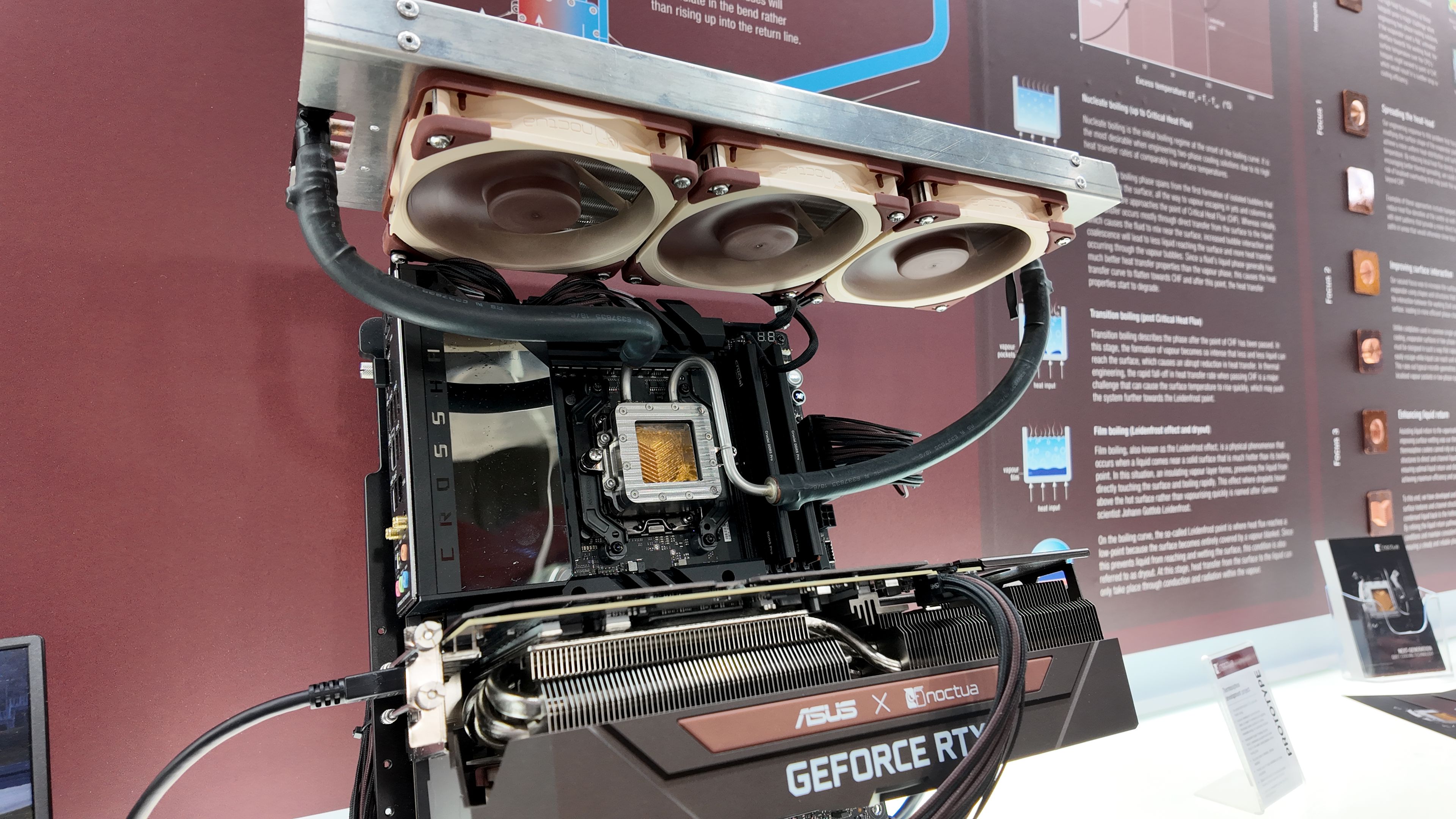
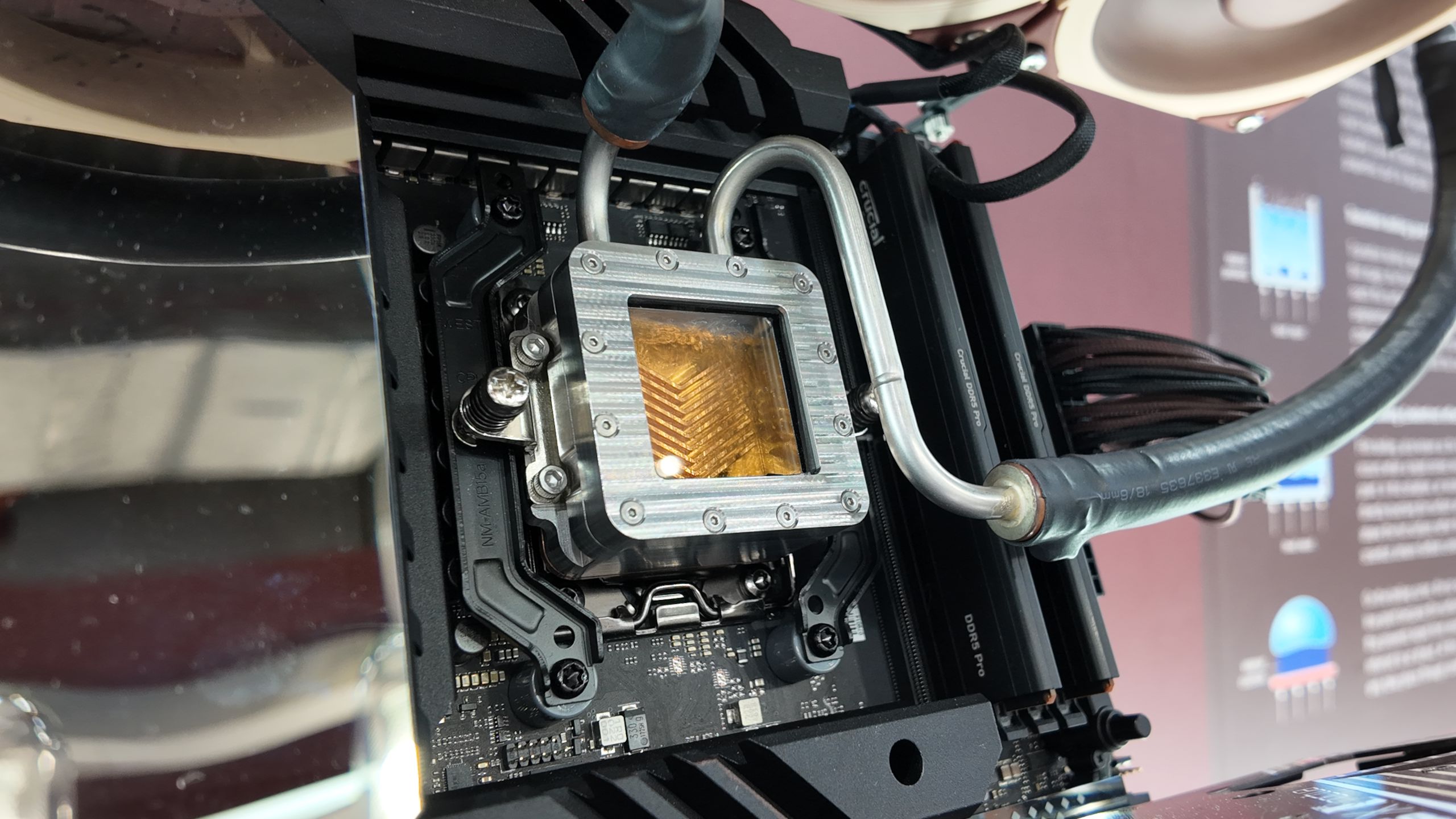
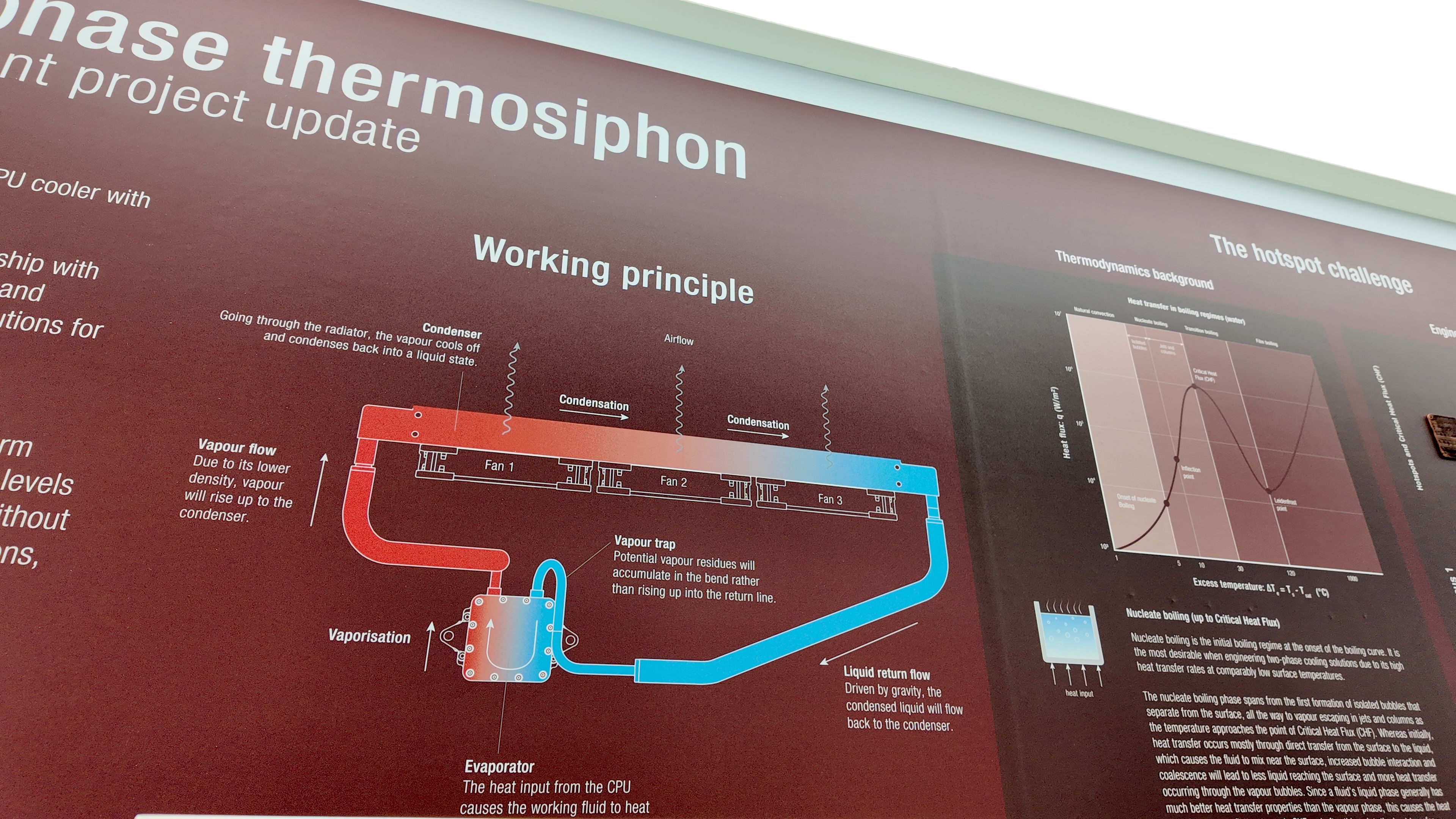
But what of the pumpless thermosiphon cooler? Well, Noctua had a demonstration of it in action and were happy to talk about how it all works, what's going well, and what isn't. Let me disappoint you now: it's far from ready, and even if everything suddenly falls into place, it won't look like it currently does.
As to why it's not ready yet, well, there are still some big challenges to circumnavigate. Noctua's thermosiphon system doesn't use a pump to push the coolant around the loop. Instead, it relies on a liquid undergoing a phase change (i.e., turning into a vapour) at the CPU, which rises into the radiator due to a drop in density. It then cools back into a liquid and naturally flows into the CPU block.

Catch up with Computex 2025: We're stalking the halls of Taiwan's biggest tech show once again to see what Nvidia, AMD, Intel, Asus, Gigabyte, MSI and more have to offer.
Without pumps, the flow rate is quite slow—too slow, in fact, for the heatplace that mounts on the CPU to have microfins, to improve the surface area for greater nucleation (points on a surface where a liquid turns into a gas, as it boils).
Noctua's current solution is to make the plate 'bumpy' where colder regions of the plate have a thinner layer of copper, compared to parts situated over the CPU's hotspots. There are still some fins on the plate, as you can see in the picture, but these are more for improving the return of the coolant.
I doubt we'll see the thermosiphon cooler in any of our PC Gamer test rigs anytime soon, but hopefully, we'll be able to try out its Asetek collab next year. If it works as good as Noctua's best air coolers, we may well have a new champion for the best AIO liquid cooler. Just don't expect it to be as low in price as our current recommendation, the Arctic Liquid Freezer III.
Nobody ever says that perfection comes cheap.

Nick, gaming, and computers all first met in the early 1980s. After leaving university, he became a physics and IT teacher and started writing about tech in the late 1990s. That resulted in him working with MadOnion to write the help files for 3DMark and PCMark. After a short stint working at Beyond3D.com, Nick joined Futuremark (MadOnion rebranded) full-time, as editor-in-chief for its PC gaming section, YouGamers. After the site shutdown, he became an engineering and computing lecturer for many years, but missed the writing bug. Cue four years at TechSpot.com covering everything and anything to do with tech and PCs. He freely admits to being far too obsessed with GPUs and open-world grindy RPGs, but who isn't these days?
You must confirm your public display name before commenting
Please logout and then login again, you will then be prompted to enter your display name.
